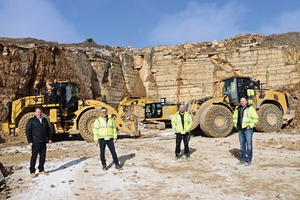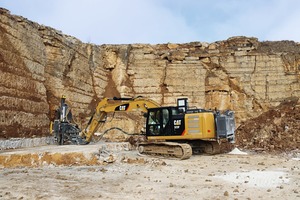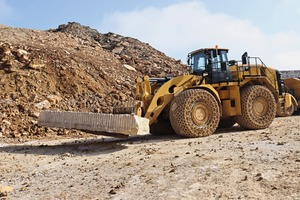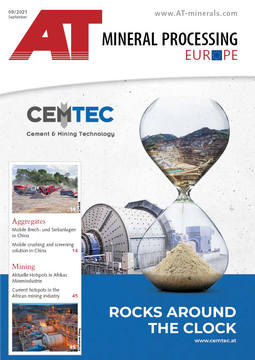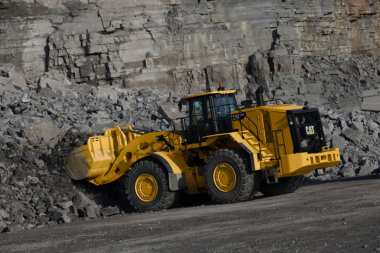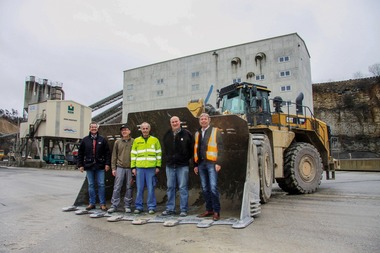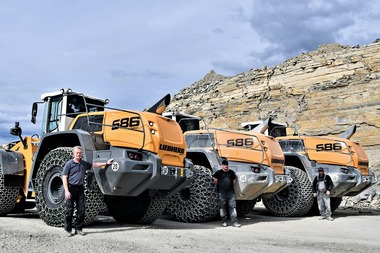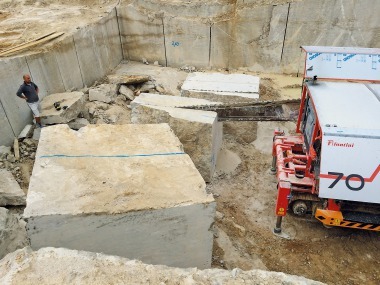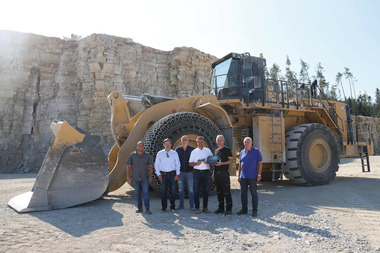VeroStone extracts Jura limestone blocks with the help of Cat technology
Many of the construction machines used up to that point testified to their longevity – 20 000 operating hours on the meter and more were not uncommon. A good example of this is an old Cat 988B wheel loader. Today, it would still be ready for use at any time. But in the future, it will be kept by the company as a stand-by unit at best. The core tasks are handled by the Cat 986K, 980M and 966M wheel loaders, the Cat 323CLN and 323FL crawler excavators and the Cat 735C and 740C dumpers. They work on different mining levels to have access to the different limestone layers that are currently in demand.
During the winter months of January and February, preparations are underway at VeroStone’s quarries to get the production sites ready for quarrying: The roadways and ramps are repaired and brought up to scratch. The construction machines, especially the track excavators, remove the 5 to 6 m high overburden and expose the layers of Jura limestone that are then extracted during the rest of the year.
In the past, the mining was done by hand. Then the blocks were taken out with a crane and a crawler loader. Today it is a combination of drilling and ripping. The Cat 323FL and 323CLN crawler excavators act as drill rigs, remotely controlled to make vertical holes in the rock strata. Hydraulic splitters are inserted into these holes, which use a pressure of around 300 bar to detach the mighty natural stone from the solid bond – deep cracks appear. Then more Cat technology comes into play. The Cat wheel loader 986K pushes its ripper tooth under the block and breaks it out. By means of a great force, layer after layer and block after block are separated. Their size depends on the natural fissures and crevices as well as layer thicknesses.
But loosening the blocks is not the end of the job – the block is usually around 3.00 x 1.50 x 1.00 m in size. That can add up to a load of 13 t or more. Such a heavy block has to be transported and loaded. For this task, the driver exchanges the ripper for forks. He uses them to hoist the block onto a Cat 735C dumper, which transports the Jura marble to the processing plant. In the meantime, the quarry has reached a depth of 29 m. The deposit is characterised by 26 layers, which are mined in different terraces. The layers are usually separated from each other by clay layers and vary in thickness and colouring between yellow and grey.
Cat construction machinery has been used in VeroStone’s quarries for several decades. “Caterpillar is more or less our house and home brand. We have accompanied the development of the machine technology, for example from the F to the K and M series,” says Marcus Hausner, Managing Partner. Consumption and a lower CO2 balance spoke for the conversion of the fleet in the dismantling process – these are aspects that are gaining in importance in the course of sustainability. “The new machines have become much more efficient and faster,” says Michael Sigl, Authorised Signatory and Operations Manager. Here, too, the Cat 988B serves as a reference: 50 l of fuel per hour used to be the norm at peak times – this compares to a consumption of just under half that of the 986K today.
“When we work in the overburden, we need a heavy piece of equipment that also has a correspondingly high speed,” adds Michael Sigl. The tyres and their tread also deserve special protection during such a tough operation. Extra chains have been fitted to reduce the heavy wear. After all, a lot of weight presses down on the small contact surfaces between the rubber and the ground, and this is where the entire propulsive force of the wheel loader is generated when it loads blocks and then drives them to the warehouse. Such equipment details have proved useful in practice. They have to be just as well considered as the right machine size.
When it came to the purchase, most of the arguments were in favour of the Cat 986K with 46 tonnes: a powerful machine that is at the same time still suitably manoeuvrable. “A central requirement was to be able to continue using the old LOC-matic attachments,” explains Wolfgang Wagner. This could be assured for the Cat 986K, because in this case hardly anything had to be changed in the implement mounting. The attachments are compatible with each other and can be used by other Cat wheel loaders for another machine lifetime due to their quality. In addition to a ripper tooth, the Cat 986K works with a fork to transport the blocks to the storage yard. In addition, there is a bucket to take over loading tasks in the quarry. To ensure that the tools can be changed quickly, the construction machine was equipped with a quick coupler.
zeppelin-cat.de
zeppelin.com

